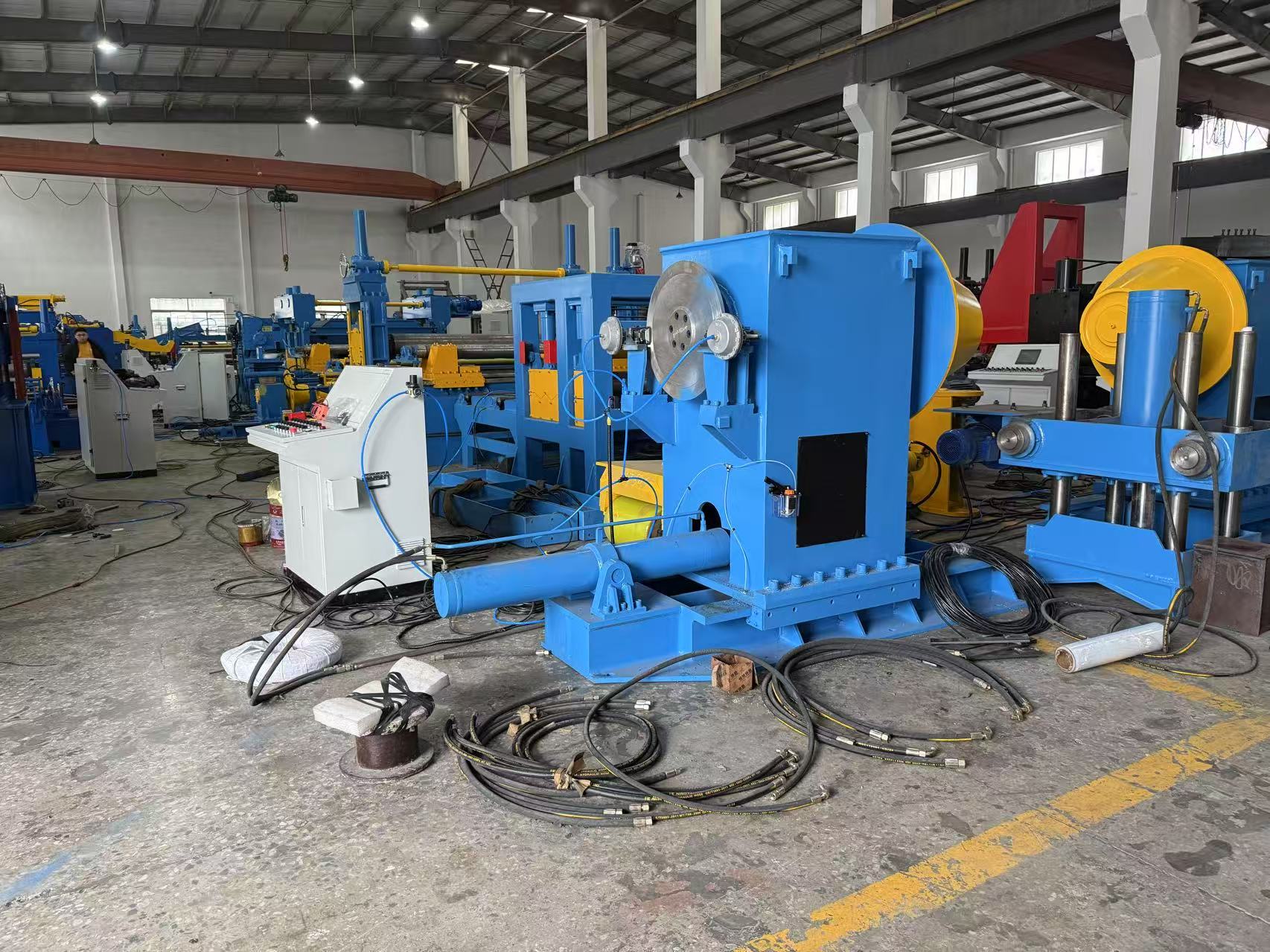The best cut to length line machine in 2025 depends on production volume, material type, precision, and automation needs. Manufacturers often require high-volume output, advanced automation, and the ability to process materials like steel, aluminum, and stainless steel. The global market for these machines is expanding, driven by demand for precision metal cutting and technological advancements.
| Aspect | Details |
|---|---|
| Production Volume | High-volume, efficient, automated output |
| Material Types | Steel, aluminum, stainless steel, other metals |
| Automation Needs | Fully automated processes for precision, speed, and waste reduction |
| Precision | Exact length cutting is essential |
| Flexibility | Programmable cutting for various materials and thicknesses |
| Maintenance | Low maintenance to minimize downtime |
Modern cut to length line systems offer unmatched speed and accuracy, making them essential for industries seeking efficiency and reliability.
1.jpg)
Cut to Length Line Types
Modern manufacturing in 2025 relies on several types of cut to length line machines, each designed for specific production needs and material requirements. These machines typically include uncoilers, levelers, measuring encoders, and cutting shears. They process a wide range of coil widths, thicknesses, and materials, making them essential for industries demanding precision and efficiency.
Standard Lines
Standard cut to length line machines serve as the backbone for many metal processing operations. They convert metal coils into flat sheets with consistent length and quality. These lines handle materials such as cold or hot rolled steel, stainless steel, and aluminum. Standard lines often feature roll feeding with servo drives, NC control systems, and high-accuracy encoders. Operators can expect reliable performance for coil thicknesses up to 4 mm and widths up to 2000 mm. These machines suit automotive, construction, and appliance manufacturing.
High-Speed Lines
High-speed cut to length line machines deliver exceptional throughput for large-scale production. With operating speeds reaching 25 to 40 meters per second and capacities up to 90 pieces per minute, these lines maximize efficiency. Advanced automation, CNC controls, and powerful servo motors ensure precise cutting even at high speeds. Manufacturers use high-speed lines for just-in-time blank production, especially in industries where volume and speed are critical.
Precision Lines
Precision cut to length line machines focus on delivering the tightest tolerances and flattest sheets. Integrated automation controls every stage, from uncoiling and straightening to shearing and stacking. These lines use high-precision feed systems and measuring encoders to achieve exact lengths. Industries such as aerospace and electronics rely on precision lines for components that demand flawless accuracy.
Heavy-Duty Lines
Heavy-duty cut to length line machines handle the thickest and heaviest coils. They support material thicknesses up to 25 mm and coil weights exceeding 30 tons. Features like high shear force, robust edge trimming, and automated stacking allow these lines to process high-strength steel and other demanding materials. Heavy-duty lines are essential for construction, shipbuilding, and infrastructure projects.
Compact Lines
Compact cut to length line machines offer space-saving solutions without sacrificing performance. By eliminating the need for a looping pit and straightening material at the shear entrance, these lines reduce installation footprints. Quick coil changeovers and efficient thread-up times make compact lines ideal for facilities with limited space or frequent product changes. Despite their size, they maintain high-quality blank production and operational efficiency.
Tip: Selecting the right cut to length line depends on your production volume, material type, and available floor space. Each type offers unique advantages tailored to specific industrial needs.

.jpg)
Key Features
Precision
Precision stands at the core of every modern cut to length line. Manufacturers demand exact sheet lengths and flawless edges for downstream processes. Advanced measuring encoders and servo-driven feed systems keep cutting accuracy within 0.5 to 1 mm. Sensors monitor material dimensions in real time, while programmable logic controllers (PLCs) adjust operations based on sensor feedback. This level of control ensures each sheet meets strict industry standards, reducing waste and rework.
Material Compatibility
Modern cut to length line machines handle a wide range of metals and alloys. They process carbon steel, stainless steel, aluminum alloys, copper, titanium, nickel alloys, and zinc. Each material requires specific tooling and process adjustments to maintain quality. For example, high-strength steel needs robust shearing force, while aluminum alloys benefit from coated blades to prevent sticking. The table below highlights key material considerations:
How Cut to Length Line Machines Differ from Slitting and Blanking Lines
Cut to length line machines, also known as blanking lines, transform metal coils into flat sheets or blanks by cutting lengthwise. These machines integrate feeding, straightening, shearing, and stacking to optimize production and inventory control. In contrast, slitting lines cut coils widthwise into narrower strips, focusing on segmenting coils with high precision and efficiency. While both CTL and blanking lines produce flat sheets or blanks for further fabrication, slitting lines serve applications that require narrow coil strips rather than full sheets. This fundamental difference in cutting direction defines their distinct roles in metal processing.
Post time: Jul-11-2025




